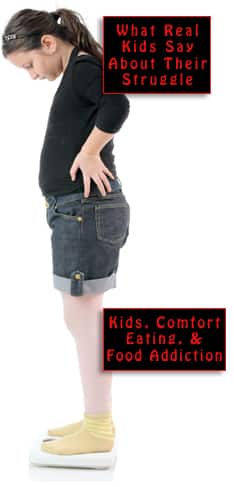
As we have seen, a co-morbidity is another serious disease that a patient has along with obesity. Maybe it and obesity are risk factors for each other, or causes of each other, or are like a couple of troublemakers who just happen to hang out in the same bad neighborhood and decide to join forces.
Where children are concerned, the realization of how many conditions can co-exist with obesity arrived in two stages. First came the awareness that obese children would probably face heavy consequences, further on down the line. Medical professionals and the public became accustomed to the idea that overweight children are gearing up for a future marred by heart disease, type 2 diabetes, or arthritis.
Then came awareness that right now, not in the future, millions of young humans are suffering from conditions that children never had before. We all got used to the idea that co-morbidities can blossom in the cardiovascular system, the central nervous system, the metabolic system, the reproductive system, the gastrointestinal and respiratory tracts.
Co-morbidity can take orthopedic or psychological form, or show up as a malignancy. Obese kids are likely to have bone, joint and muscle irregularities, or asthma, or ear infections, or allergies, or crazily sequenced development, behavioral problems, ADHD, depression, and a bunch of other stuff.
A 2013 study from UCLA’s Center for Healthier Children, Families & Communities pointed to stress as the chief villain, which was reported by the American Pediatric Association thusly:
It’s a chicken-or-egg scenario, the APA says, because stress may contribute to the risk of obesity and related issues, while obesity and health issues may contribute to stress.
In other words, what we call a vicious cycle is at work. Another vicious cycle is set up by the interactions of obesity and pain, which cause and perpetuate each other. The journal Obesity published a study based on “a Gallup poll of 1,062,271 randomly selected adults interviewed between 2008 and 2010.”
Compared to normal-weight people, the overweight report 20% higher rates of pain, and the obese report 68% higher rates of pain. Now, when it comes to Class III obesity, defined as a BMI of 40 or more, people who truly are morbidly obese, that group reported 254% more pain.
Obviously, someone who is in pain just sitting still is not a good candidate for an exercise program. Dr. Arya Sharma, who is scientific director of the Canadian Obesity Network, calls pain a major barrier and “a major driver of weight gain in a lot of patients.” Reporter Sharon Kirkey wrote:
According to the researchers, one plausible explanation is that excess fat is biologically active. It secretes leptin and other hormones that can cause inflammation throughout the body “that ultimately create states that result in pain.”
Oddly, the same word appears in a piece titled “Obesity Conclusively Linked to Gum Disease.” Previously, researchers were aware of links between diabetes and gum disease, and between diabetes and obesity, but despite this indirect connection, a direct relationship between obesity and gum disease had not been proven.
This changed when a Case Western Reserve University study determined that the two are linked by the “underlying inflammatory processes found in both conditions.” The report quotes lead author Dr. Charlene Krejci:
Obese individuals’ bodies relentlessly produce cytokines, proteins with inflammatory properties. These cytokines may directly injure the gum tissue or reduce blood flow to the gum tissue, thus promoting the development of gum disease.
And yes, children and adolescents can absolutely get periodontal disease.
Your responses and feedback are welcome!
Source: “The Kids Aren’t All Right: Childhood Obesity may be at the root of more problems,” NASM.org, 09/14/14
Source: “People who are obese face higher rates of pain: study,” Canada.com, 07/09/12
Source: “Obesity Conclusively Linked to Gum Disease,” Frisco-Dentist-Blog.com, 02/21/13
Photo credit: Mark Turnauckas via Visualhunt/CC BY

 FAQs and Media Requests:
FAQs and Media Requests: 











